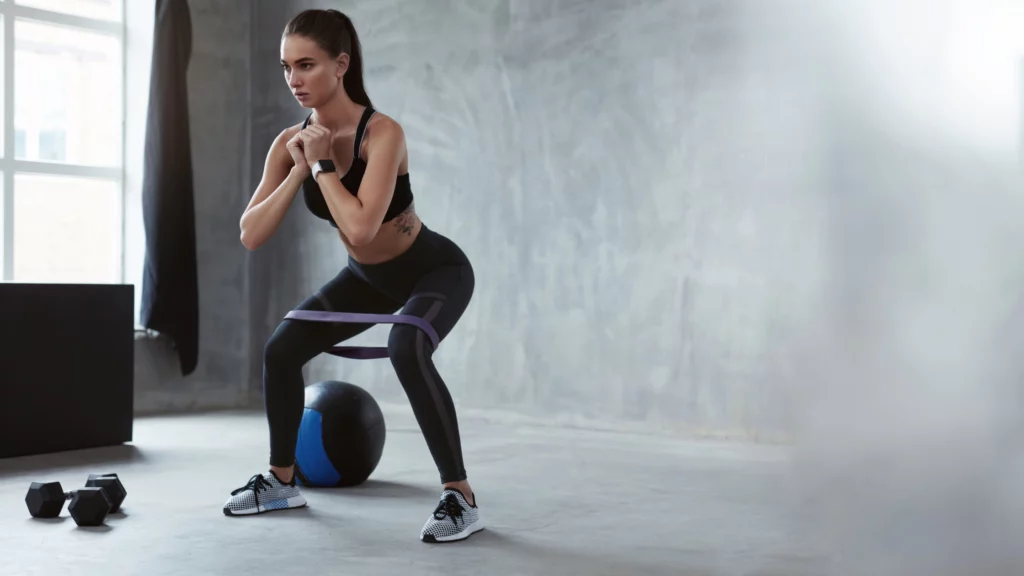Artistic Gymnastics Exercises: Basic Techniques and Useful Resources for Free Body
Introduction to Artistic Gymnastics Exercises
There artistic gymnastics It is a discipline that requires a mix of strength, flexibility, balance and coordination. The artistic gymnastics exercises floor exercises are among the most practiced, both by beginners and by experienced athletes. These exercises, which include acrobatic movements and balance techniques, help develop the physical skills necessary to excel in this sport.
In the course of the artistic gymnastics training, athletes gradually improve their ability, starting from simple exercises up to complex and spectacular movements. The basis of every artistic gymnastics lesson It starts with a proper warm-up, followed by a series of exercises that focus on different areas of the body, preparing it for more advanced movements.
In the following sections, we will explore basic techniques, workout routines, and how these exercises can be performed both in the gym and at home to gradually improve strength and flexibility.
Content index
The Fundamentals of Artistic Gymnastics: Basic Techniques

In the artistic gymnastics, master the basic exercises is essential to building a solid physical and technical preparation. These movements not only help develop strength and flexibility, but prepare athletes to perform more complex exercises in the future. Among the main artistic gymnastics exercises in the free body we find:
- The Bridge: A fundamental exercise for developing flexibility in the back and shoulders. The bridge is often one of the first exercises taught in artistic gymnastics lessons.
- The Wheel: This acrobatic movement requires coordination and control. The cartwheel is an essential exercise to improve balance and sense of movement in space.
- The Leap: In the routines of artistic gymnastics, jumps are used to increase the explosive power of the legs and improve grace in movements.
- The Landing: Knowing how to land correctly after a jump or flip is crucial to avoiding injuries and ensuring continuity of movement.
These basic artistic gymnastics exercises are the foundation on which to build an effective workout. They are suitable for both beginners and experienced athletes, and can also be practiced at home, with the right equipment to ensure safety and comfort.
Artistic Gymnastics Workouts for Free Body
The artistic gymnastics training for free body are essential to improve technique and increase the strength and flexibility needed in this discipline. Training routines vary according to the athlete's level, and include movements that help develop agility, endurance and body control.
Beginner Training
For those who are approaching the artistic gymnastics, the goal is to master the basic movements. A typical artistic gymnastics training for beginners may include:
- Rolling forward and backward: To improve the perception of the body in space.
- Simple jumps and controlled landings: To develop leg strength and learn how to manage the body in flight.
- Bridges and wheels: To increase flexibility and control.
Intermediate Training
As an athlete moves to an intermediate level, the emphasis is placed on more complex movements and the combination of techniques:
- Jumps with rotations: Like the tuck jump and the somersault jump, which develop explosiveness.
- Simple acrobatic steps: Like the handstand or the handstand.
- Core and shoulder strength work: Plank and leg lift exercises to prepare the body for more advanced movements.
Advanced Training
For advanced athletes, the artistic gymnastics training include complex acrobatic movements and combined sequences:
- Flips and somersaults: To improve technique in aerial movements.
- Multiple sequences of acrobatic steps: Combining different techniques seamlessly.
- Intense work on flexibility and stability: Dynamic stretching and advanced balance exercises.
Everything is fine artistic gymnastics training should end with stretching exercises to increase flexibility and prevent injury. Remember that consistency and attention to technique are key to progressing safely and effectively.
Artistic Gymnastics Lessons for Beginners

The artistic gymnastics lessons for beginners are designed to teach the basics of the discipline in a gradual and safe way. These lessons aim to develop physical strength, coordination and flexibility through controlled and progressive movements. A typical program of artistic gymnastics lesson includes exercises that help new athletes become familiar with basic movements and build the foundation needed to advance in the future.
Contents of a Beginner Lesson
During a artistic gymnastics lesson, beginners go through several basic exercises that help them develop confidence and body control:
- Heating: Each class begins with a targeted warm-up, such as light jogging, stretching, and rolling to prepare the body for the exercises.
- Basic exercises: Athletes learn simple movements such as the bridge, cartwheel, tuck jump, and controlled landing. These exercises are essential to gaining a solid technical foundation.
- Strength training: Bodyweight exercises to strengthen the core, legs and arms, such as planks, push-ups and squats, are often included.
Beginners' Lessons Objectives
The main goal of a artistic gymnastics lesson for beginners is to build a good basic technique, which is necessary to progress to more complex exercises. Learning the right posture and correct body alignment are crucial to avoid injuries and improve performance.
Tips to Get Started
If you are about to attend your first artistic gymnastics lesson, it is important to be prepared:
- Wear comfortable clothing that is suitable for physical activity.
- Make sure you have a good mat or mattress to protect your body during falls.
- Focus on technique and listen carefully to the instructor's advice.
The artistic gymnastics lessons Not only will they help you develop strength and agility, but they will also provide you with a solid foundation to progress to the next levels.
Athletic Preparation for Artistic Gymnastics: Strengthening the Body

There athletic training artistic gymnastics is a fundamental component to improve performance and prevent injuries. This training phase aims to strengthen the muscles involved in acrobatic movements and to develop the resistance needed to sustain long training sessions. In particular, strength, resistance and flexibility exercises are essential for a gymnast, whether a beginner or an advanced athlete.
Strength Exercises
To improve power and stability, it is essential to include specific strength exercises for artistic gymnastics. These exercises target the legs, arms and core:
- Squats and lunges: These movements improve leg strength, which is crucial for jumping and landing.
- Plank and leg raises: They strengthen the core, which is essential for maintaining body control during acrobatic movements.
- Push-ups: They work on the shoulders and arms, which are necessary to support the weight of the body during exercises such as handstands.
Flexibility Exercises
Flexibility is a key quality in artistic gymnastics and can be developed through a series of dynamic stretching exercises:
- Shoulder and back stretches: Exercises like the bridge improve mobility and flexibility in the back.
- Leg Stretch: Stretching your legs helps you perform movements like splits and jumps with greater range and grace.
Cardiovascular Training
Cardiovascular endurance is equally important, especially during bodyweight routines that require continuous execution:
- Jogging or skipping rope: These exercises improve cardiovascular endurance and help maintain energy during a routine.
There athletic training artistic gymnastics provides athletes with a solid foundation needed to best meet the physical challenges of gymnastics. Including a strength and flexibility routine in your training program is essential to improving performance and reducing the risk of injury.
Artistic Gymnastics Exercises at Home: How to Train Safely

Although much of the training of artistic gymnastics It takes place in the gym, it is possible to perform some artistic gymnastics exercises at home to improve strength, flexibility and technique. Working out at home can be a great way to supplement your regular workout routine, as long as you have the right equipment and follow the right safety precautions.
Basic Exercises to Do at Home
Here are some artistic gymnastics exercises which can be performed safely at home:
- Bridge and wheel: These exercises improve the flexibility of your back and shoulders. Make sure you have a suitable mat to cushion your falls.
- Jumps: Practice vertical jumps to improve leg power and coordination. Jumps are essential to many floor exercises.
- Leg stretches: Splits and other leg stretches help develop flexibility, making it easier to perform acrobatic exercises.
Equipment Needed for Training at Home
To train safely at home, it is important to have the right equipment. Using a high-quality mat or mattress is essential to protect the body during falls and landings. In particular, Bortolotto mattresses and mats are an excellent choice for those who want to train safely at home.
Safety Tips for Home Workouts
When you perform artistic gymnastics exercises at home, it is important to follow some safety rules:
- Always use a mat or mattress: Avoid training on hard or uneven surfaces which may increase the risk of injury.
- Train with enough space: Make sure you have enough space to perform movements such as jumps or rotations without hitting furniture or walls.
- Gradual progression: If you are a beginner, start with the basic exercises and increase the difficulty as you gain more confidence.
With the right equipment and a well-structured training plan, you can improve your skills in artistic gymnastics even at home.
Why Choose Bortolotto Mattresses

When it comes to training safety, equipment plays a fundamental role. The mats and mats used during artistic gymnastics sessions must guarantee the right shock absorption to prevent injuries, especially when performing floor exercises. Bortolotto mattresses, available on artistic gymnastics mattresses, represent the ideal solution for those looking for high quality, safe and durable products.
Features of Bortolotto Mattresses
THE Bortolotto mattresses They are designed to offer maximum comfort and safety to artistic gymnastics athletes, thanks to a series of innovative features:
- Eco-sustainable padding: Made from recycled and sustainable materials, the mattresses provide high shock absorption capacity without compromising the environment.
- Durability and Resistance: Each mattress is designed to last over 20 years, thanks to the use of high-quality materials that resist wear and tear even with intensive use.
- Advanced Security: Bortolotto mattresses are made with cutting-edge technologies such as the system Btex, which offers a non-slip and resistant surface. In addition, the hidden zippers and the hollow-effect padding AmS provide excellent protection during falls.
Gymnastics Mats: Quality and Comfort
Train on a quality mattress It is essential to prevent injuries and improve performance. Bortolotto mattresses They have been designed to adapt to any training need, making them perfect for both professional gyms and home use. They are available in different variants, suitable for free body exercises and other disciplines.
If you are looking for a safe and long-lasting solution for your workouts or your gym, we invite you to explore our full range of Bortolotto mattresses and mats, perfect for artistic gymnastics and other sports disciplines.
Train Safely and Improve Your Performance

There artistic gymnastics It is a discipline that requires commitment, technique and solid physical preparation. Whether you are a beginner learning the basics or an advanced athlete perfecting acrobatic techniques, constant and well-structured training is essential for improving performance.
The artistic gymnastics exercises free body exercises are the heart of the workout, and can be performed both in the gym and at home, always following the right safety rules. The use of quality equipment, such as Bortolotto mattresses, ensure that you can train with complete peace of mind, reducing the risk of injury and improving your overall performance.
If you are looking for safe and long-lasting solutions for your artistic gymnastics training, discover the Bortolotto mattresses and mats available on iTatami. Designed to offer maximum protection and comfort, our products are ideal for athletes of all levels and guarantee long-lasting durability.
Train with the best tools and take your gymnastics to the next level!
Additional Resources for Further Study
If you want to learn more about the techniques, exercises and training methodologies in artistic gymnastics, here are some useful resources:
- Federginnastica – Technical in-depth document on artistic gymnastics
An official document that explores the main techniques of artistic gymnastics, with a focus on training methodologies and athletic preparation. - Federginnastica – Insights into advanced techniques
A technical guide with practical examples to improve performance in artistic gymnastics exercises, aimed at professionals and enthusiasts. - Buonarroti-Fossombroni: Introductory lesson on artistic gymnastics
A great starting point for those who want to learn the fundamentals of artistic gymnastics, with a lesson structured for beginners.
These resources will provide you with additional technical information to enhance your training and expand your knowledge of artistic gymnastics.
Artistic Gymnastics Videos: Tutorials Recommended by iTatami
To improve your technique in artistic gymnastics, iTatami has selected a series of high-quality video tutorials, suitable for both beginners and experienced gymnasts. These videos offer detailed explanations and techniques to perfect fundamental and advanced movements.
Recommended Playlist:
- Gymnastics Training – Skills and Drills
This playlist features a variety of exercises and workouts ranging from basic to more complex gymnastics movements, perfect for athletes of all levels.
Single Video Tutorials:
Cartwheel Tutorial – How to Do a Perfect Cartwheel
A tutorial that will guide you in the correct execution of a perfect cartwheel, essential for developing balance and control.
Front Handspring Tutorial – Gymnastics Basics
A video explaining how to perform a front handspring safely, highlighting the key aspects of correct technique.
These videos offer essential visual support for those who want to perfect their skills in artistic gymnastics exercises, and are useful for both gym and home training.
FAQ – Frequently Asked Questions
The artistic gymnastics exercises vary depending on the discipline and the level of the athlete. Some of the most common exercises include:
- Free body: Acrobatic movements such as somersaults, somersaults, cartwheels and flips.
- Balance beam: Balancing movements and rotations on a narrow surface.
- Uneven bars: Strength and coordination exercises with rotations and passages between the two bars.
- Vaulting: Dynamic jumps and acrobatics performed with the aid of a vaulting table. Each exercise develops strength, agility, flexibility and coordination.
The most difficult exercise in the artistic gymnastics It depends on the level and specialization of the athlete, but some of the more complex movements include:
- The double twist somersault free body.
- The double somersault descent to the uneven bars.
The double jump with twist vaulting. These exercises require a high level of strength, precision, and coordination, as well as exceptional body control.
There artistic gymnastics develops an athletic and harmonious physique. Artistic gymnastics athletes tend to develop:
- Toned and defined muscles, especially in the core, arms and legs.
- High flexibility, thanks to stretching and mobility exercises.
Agility and coordination, essential for performing acrobatic movements. A gymnast's physique is generally lean but extremely powerful, with a focus on muscular endurance and balance.
The number of hours of daily training varies according to the athlete's level:
- Beginner gymnasts: They usually train 2 to 4 hours a week.
- Intermediate gymnasts: They can train up to 10 hours a week.
Professional and Olympic gymnasts: They train 4 to 6 hours a day, for a total of 20-30 hours a week. Daily training includes sessions on technique, strength, flexibility and athletic preparation to ensure optimal performance and prevent injuries.







